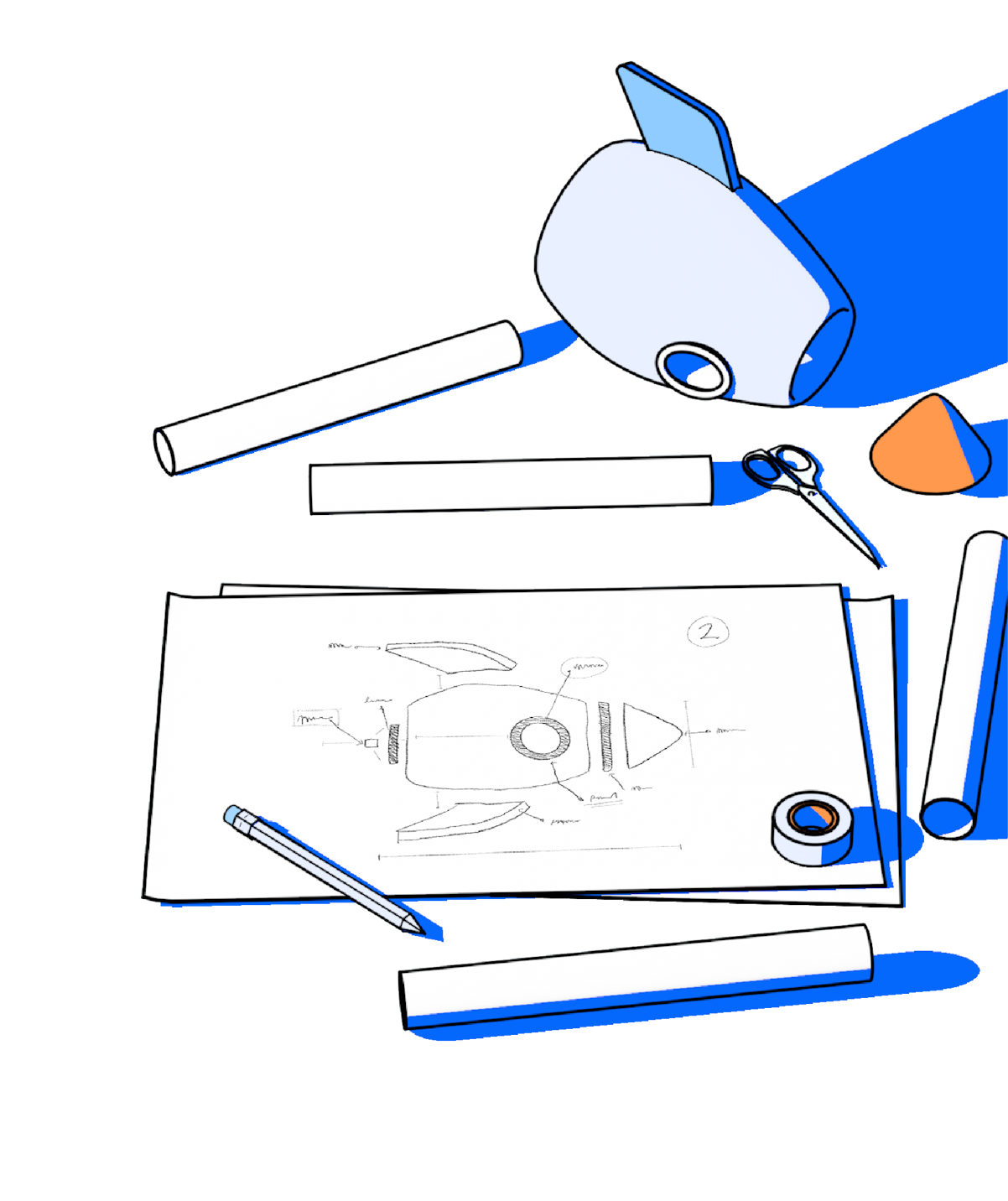New products are the lifeblood of any business—they allow companies to constantly evolve to better satisfy customers' needs and expectations, increase their market share, and gain a definitive advantage over competitors.
Yet of thousands of products entering the market each year, it is estimated that around 70%-80% of them fail. Careful planning is essential to minimize risks and increase the odds of success, and this can only happen when a company has a solid product development strategy in place.
Successful companies rely on well-defined product development strategies to organize user and market research, understand their customers’ pain points and expectations, and accurately plan the resources and time required to develop the product.
7 Product development examples and strategies from well-known companies
If you're looking for real-world inspiration, we've rounded up seven product development examples from companies across different industries. Learn how they deliver superior value to customers, innovate, and boost growth while keeping the customer at the center of their new product development process.
1. Google
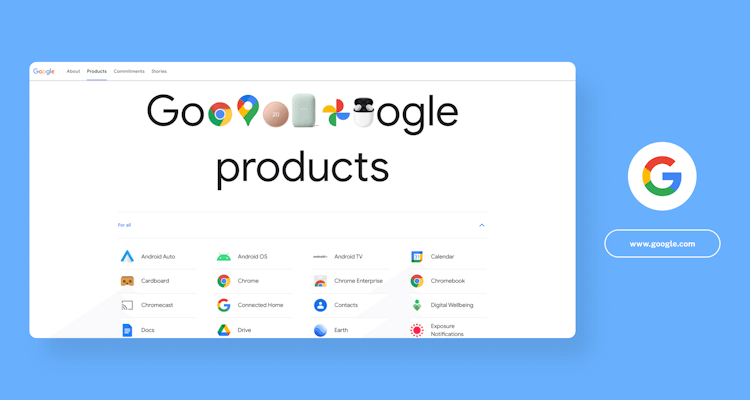
Our first product development example is a big one. Founded in 1998 by Sergey Brin and Larry Page, Google began as an online search company, but it now offers hundreds of products and services, such as Gmail, YouTube, the Android operating system, Chrome web browser, and more. Google’s broad product portfolio makes it one of the world-leading companies in the high-tech marketplace. To maintain its competitive advantage, the company is constantly innovating. But how do they develop all these successful products?
Bet on technical insights that help solve a big problem in a novel way, optimize for scale, not for revenue, and let great products grow the market for everyone.
Eric Schmidt
former Google CEO and co-author of the book ‘How Google Works’
Google’s product development strategy is technology-driven. Innovation is at the heart of the firm and this means ensuring a steady stream of new technology products.
In his famous talk, Joe Faith, former Product Manager at Google, explains that the company doesn’t follow a rigid process to develop its products. Instead, it follows a set of guiding principles and values. Here are three core values:
- Focus on the user. On a higher level, focusing on the user means reaching out to users and gathering data about their behavior, problems, and preferences to build a product they will love and use. On a deeper level, it means optimizing for mass adoption, not for monetization. What matters is how much value the product brings to its customers and how many people will use it.
- Think 10x. Google believes that true innovation happens when you try to improve something by ten times rather than by 10%. In what way is a product better? Is it ten times faster, lighter, cheaper? This 10x approach is what motivates Google to go beyond existing models and totally reimagine an idea.
- Launch and iterate. Google produces an early version of many of its products as soon as possible and releases them as beta launches. After each launch, they listen carefully to users and make rapid iterations to improve their products based on that feedback. Innovative technology products are high risk, and Google wants to know if a solution is viable or not before investing time and resources into it.
2. Amazon
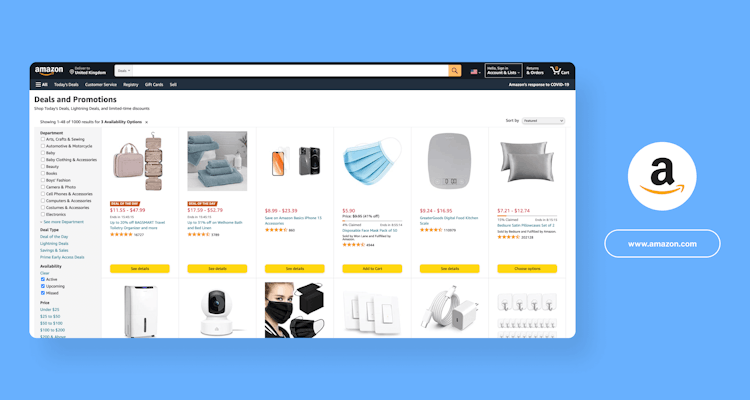
Jeff Bezos launched Amazon as an online bookstore in 1994. Since then, the company expanded to become the world’s largest online marketplace, AI assistant provider, live-streaming platform, and cloud computing platform. But what's the secret behind Amazon's worldwide success?
Amazon developed a set of scalable and repeatable processes, combined with 14 leadership principles that the company uses every day, from discussing ideas for new projects to deciding on the best approach to solving a problem.
The first Amazon leadership principle and the most important one is customer obsession: Leaders start with the customer and work backwards. They work vigorously to earn and keep customer trust. Although leaders pay attention to competitors, they obsess over customers.
It's no surprise that Amazon's product development strategy and approach focus entirely on customer needs.
The Amazon working backward method
Amazon’s approach to product development is called “working backward.” Rather than starting with an idea for a new feature, product, or line of business, Amazon starts from the customer experience and works backward from that.
The first step in the product development process is to write an internal press release announcing the launch of the new product. Press releases are centered around the existing customer problem, why current solutions fail to correct the problem, and how the new product would blow away existing solutions.
If product managers find it hard to write a press release or understand why a product would add value to customers, this means the product isn’t worth the effort. They will need to continue to refine the document until they develop ideas that will generate value.
Once the project moves into development, the team can use the press release as a strategic guide. This document serves a similar function as the product roadmap—it keeps team members on the same page and acts as an overview of the product's direction, priorities, and progress.
3. Netflix
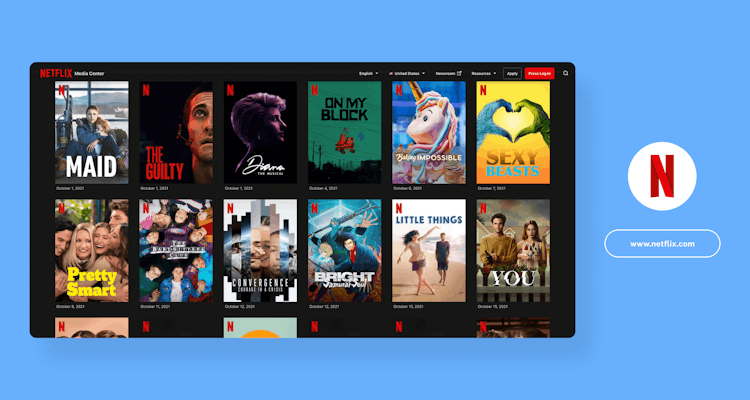
Netflix is the world's leading streaming entertainment service with over 209 million subscribers in over 190 countries (July 2021). Netflix started in 1997 as a DVD mail rental business. In 2007, the company shifted its business model and decided to go digital with the introduction of streaming media. Customers can now access a wide range of movies, TV series, and original Netflix content for an affordable, no-commitment monthly fee.
The product team at Netflix prioritizes monthly retention as the company's high-level engagement metric, along with other metrics, including growth and monetization. Let's review a few principle concepts that Netflix follows in its product development process.
Consumer science
At the core of Netflix's product development process is consumer science—a methodology to experiment, test, and learn. Product teams constantly test new ideas with customers and measure for statistically significant differences in how they engage with the product. In the end, engagement and retention are the key metrics that drive product success at Netflix.
- The product development process at Netflix usually starts with a hypothesis. The team looks for ideas to increase member engagement and ultimately member retention.
- As a second step, the team designs a test to validate the hypothesis with real users. This step usually involves quickly creating a prototype that captures the essence of the product concept. The goal isn't to create a perfect representation of the final product but to validate ideas quickly.
- The third step is the test itself. Netflix rolls out the prototype to a set of users to see how they use the product. Tests can have hundreds of thousands of users participating, and testers are organized in different cohorts to test different variations of a solution. The team uses various metrics to validate the hypothesis, but ultimately those of reference are engagement and retention.
Testing out product ideas with users allows Netflix to make big bets, make decisions based on real customer value, and successfully innovate.
Personalization
Netflix users can watch content on-demand, on any device, and the experience is personalized to their tastes. Personalization is a key element of Netflix's product strategy. The company leverages machine learning and artificial intelligence (AI) to give its customers personalized experiences and recommend shows or movies based on their past choices and browsing history. Higher personalization increases user engagement, customer satisfaction, and customer retention.
Original content
As part of its product strategy, Netflix is currently placing a strong focus on original content. "House of Cards," the company's first original series, was launched in 2013. The show marked a crucial turning point in Netflix's growth. Indeed, the more content Netflix produces, the more subscribers it attracts and retains. Ultimately, this increases revenue, which means the company can continue developing innovative products and services and remain competitive in the market.
4. Zoom
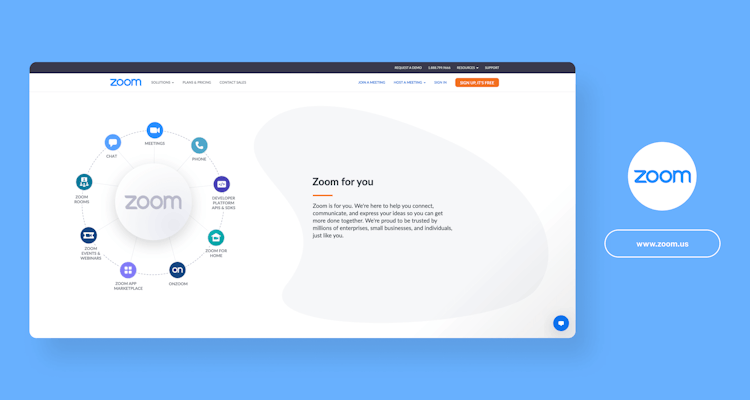
Zoom is a cloud-based conferencing tool that allows users to virtually interact with each other through audio, video, and chat. Founded in 2011 by Eric Yuan and launched in 2013, Zoom became synonymous with video conferencing. In response to COVID-19, Zoom was recognized as Frost & Sullivan’s Company of the Year for 2020 and one of the best tools for product managers at the 2020 Product Award.
Customer focus
From the moment we founded Zoom, our main focus has been to provide a cloud video communications solution that would make customers happy. That focus has continued to guide all our innovations, partnerships, and other initiatives.
Eric Yuan
Founder and CEO of Zoom
Zoom’s product strategy revolves around customers’ needs. Customers are at the center of all business and product development decisions. This principle is what inspired Eric Yuan to found Zoom in the first place.
Before founding Zoom in 2011, Eric Yuan worked as VP of Engineering at the video start-up Webex, then acquired by Cisco. By engaging with consumers, he observed that users were dissatisfied with the existing video collaboration solutions. Inspired to solve user needs, Eric decided to found Zoom and build a video conferencing tool that worked, was simple to use, and cost-effective.
During the years, the company has continued to expand its customer focus model. The team listens carefully to product feedback and acts on it to fine-tune the product and deliver better user experiences.
Product-led growth
Zoom is an excellent example of product-led growth—a business methodology in which user acquisition, expansion, conversion, and retention are driven primarily by the product itself. Zoom offers a hassle-free and simple connection to its customers. The platform and its core features are entirely free for up to 100 participants and a maximum of 40 minutes. In this way, users can experience the product, invite others to try it out, or upgrade to a paid plan.
“This market is extremely crowded. Without a freemium product, I think you’re going to lose the opportunity to let many users test your products,” explains Eric Yuan in an interview. “We make our freemium product work so well. That’s why almost every day there are so many users coming to our website. If they like our product, very soon they are going to pay for the subscription.”
Flexibility
Zoom’s success is also due to its ability to adapt its product strategy to the changing market conditions. When the COVID-19 pandemic hit in early 2020, video conferencing tools became the norm for business calls, school lessons, and catching up with friends and family. Following a surge in user demand, Zoom partnered with Oracle Cloud to support infrastructure capabilities and doubled down on security and privacy improvements. The company also prioritized education, teaching its new users how to use the tool for teaching, working remotely, or meeting friends and family.
Tip ✨
Market validation involves researching potential users of a new product to gauge how viable the product idea would be in the target market.
Examples of new product development
Now we’ve seen some examples of how successful organizations approach their product development, let’s delve into some new product development examples, of companies who pushed the boundary on product development—and how they innovated their current designs.
5. Booking.com
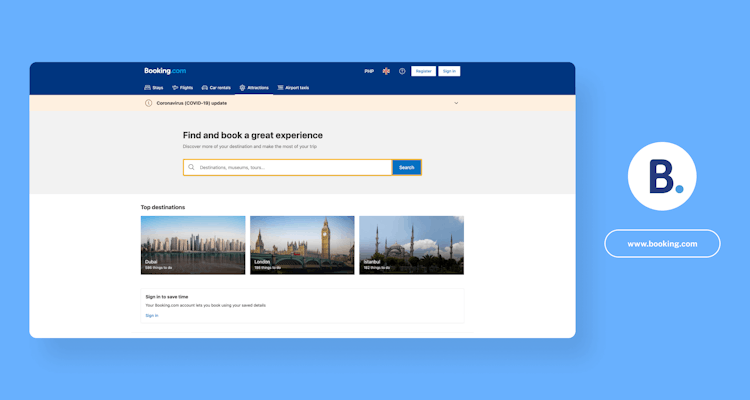
Founded in 1996 in Amsterdam, Booking.com has grown from a small startup to one of the world's leading digital travel companies. The company's mission is to make it easier for everyone to experience the world. As well as accommodation, Booking.com allows you to book other parts of your trip, including flights, rental cars, public transport, and attractions.
The Rides team at Booking.com helps customers book transport for their trips. Among other things, the team is responsible for the booking experience for taxis, and one problem it was trying to solve was how to make it easy for customers to book a return taxi for their trips through the app.
"When I joined the Rides team, we were halfway through building the MVP of the return taxis feature," says Ben Zacharias, Senior Product Manager at Booking.com. They already had a similar product on the web to compare to and wanted to test two different hypotheses:
- The first was related to whether customers wanted to book their outward and return taxi journeys together
- The second considered whether customers wanted to search for a single journey first and then add a return journey once they'd confirmed that first leg
To validate the hypothesis, Ben and his team created two different prototypes and ran usability tests. Given time constraints, they tested both solutions at the same time. "This is a great example of how product development isn't always necessarily perfectly linear," says Ben.
Once they tested the solutions, the developers implemented them and released them as AB tests. Ben worked with the analyst on the team to do an analysis not only on the individual features but also the interplay between them. Once they were happy with the results, they released the solution that performed better for their customers.
Tip ✨
Concept testing allows you to validate product, design, and marketing ideas early on and save time and resources by moving forward with the right concepts.
6. Typeform
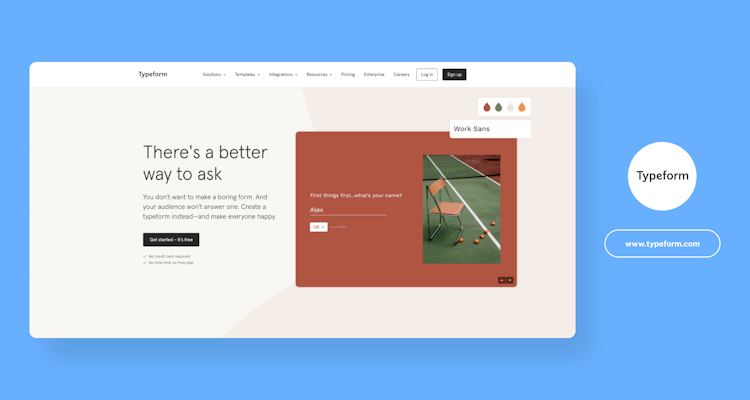
Typeform is an online software as a service company that allows customers to build online forms, surveys, quizzes, landing pages, and more. Logic is an essential feature of Typeform—it makes it possible to create relevant, smart surveys that react to the respondents' answers. With the Logic Map feature, users can visualize the different logic flows and keep track of them while designing and editing their surveys.
The idea of developing the Logic Map feature came from Typeform's customers. "We knew this was something our customers wanted," explains Ganna Kryklii, Senior Product Marketing Manager at Typeform. "Our customer support team saw this was one the most common feature requests, so we decided to explore the idea."
The first step was running a one-week design sprint to understand how to develop the idea, what key components of a logic map were relevant to customers, and estimate costs in terms of time and resources. The design sprint was led by the UX designer and product manager but involved researchers, product marketers, and engineers.
I like the idea of having a design sprint and establishing a cross-functional team from day one to bring different perspectives to the table. This was vital to come to a conclusion and decide what we wanted to build.

Ganna Kryklii
Senior Product Marketing Manager at Typeform
After the design sprint, the product team started working on the proposed solution. They built the prototype to test, refine, and validate the idea with real users. They then created the MVP and launched the first beta version of the Logic Map feature.
Ganna and her team released the feature to a small set of users first and gradually increased until they reached 100% of their audience. This allowed them to collect product feedback and resolve any issues before launching the feature to the entire user base.
7. Revolut
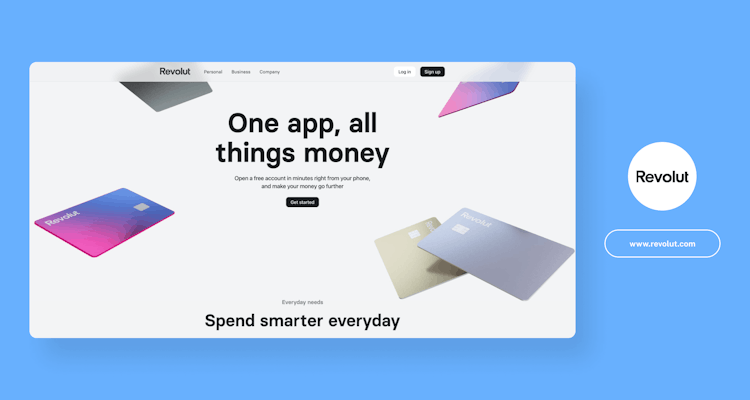
Founded in 2015 by Nikolay Storonsky and Vlad Yatsenko and headquartered in London, Revolut is a financial technology company that provides a range of online banking services, including bank accounts, debit cards, fee-free currency exchange, stock trading, and more.
Revolut also operates a children's prepaid card account called Revolut <18, designed for kids aged 7-17 to help them manage their money and build essential financial skills. Revolut Junior integrates directly with the main Revolut app, allowing parents to create an account for their children, transfer money, access transactions, and more.
"The Revolut Junior project included two streams of work: the Brand platform development to understand how to position the product and the MVP definition of the functionality for kids and parents," explains Regina Smirnova, former Senior Product Designer at Revolut.
To kick-off the work on the Brand platform, the team ran a workshop with the main stakeholders to define the core values, target audiences, personality, and long-term product direction, using the Three-Hour Brand Sprint Template by Miro. The results helped the branding team define the visual style of the app and the Revolut cards.
The Double Diamond framework proved very valuable for building the MVP. "Building a new product from scratch, we wanted to launch an MVP that would be easy to understand for the kids and easy to set up for the parents," says Regina.
- The Discovery stage involved conducting competitor research and user interviews to gather meaningful data and insights. This information helped the team identify four user groups: kids aged 6-10, 11-15, 16-18, and parents. Each user group was represented as a persona that the team could refer to during the product development process.
- In the Definition stage, the team brainstormed ideas for the app's functionality and prioritized them based on customer value and development effort. They created the Revolut Junior app's information architecture and a feature map for the parents' Revolut app. The feature map initially was divided into two parts: MVP and future releases.
- During the Development stage, the product team created multiple potential solutions for the MVP version of the app and conducted usability testing with the youngest Revolut users and their parents.
- The Delivery stage involved preparing the product for launch and working closely with the engineering team on the app development. The team organized a Friends and Family launch with the Revolut employees and their kids, who received their very first cards.
Wrapping up
New products are essential for your company's growth and success. But to ensure you’re building a product that adds real value to customers, a strong product development strategy is key. We hope these seven real-life product development examples will serve as an inspiration for your own product strategy. One key takeaway is to put customers at the center of your decision-making process and be ready to test out new ideas and keep iterating. In this way, you can constantly improve your product and provide better solutions to your target audience.
Frequently asked questions
What are the 7 best product development examples?
What are the 7 best product development examples?
Seven successful companies that are able to achieve and maintain a competitive advantage through product development are Google, Amazon, Netflix, Zoom, Booking.com, Typeform, and Revolut. By putting customers at the heart of their product strategies, these companies build successful products that deliver new value.
What are the steps of product development?
What are the steps of product development?
Product development refers to all steps involved in bringing a product from idea or concept to market launch. The seven steps of the product development process include idea generation, idea screening, concept development and testing, marketing strategy and business analysis, product development, test marketing, and product launch.
How do you develop a product development strategy?
How do you develop a product development strategy?
To develop an effective product development strategy, you first need to define your product vision and conduct in-depth research of your customers, target market, and competitors. You can then set the product goals and use those goals to plan the product roadmap.
